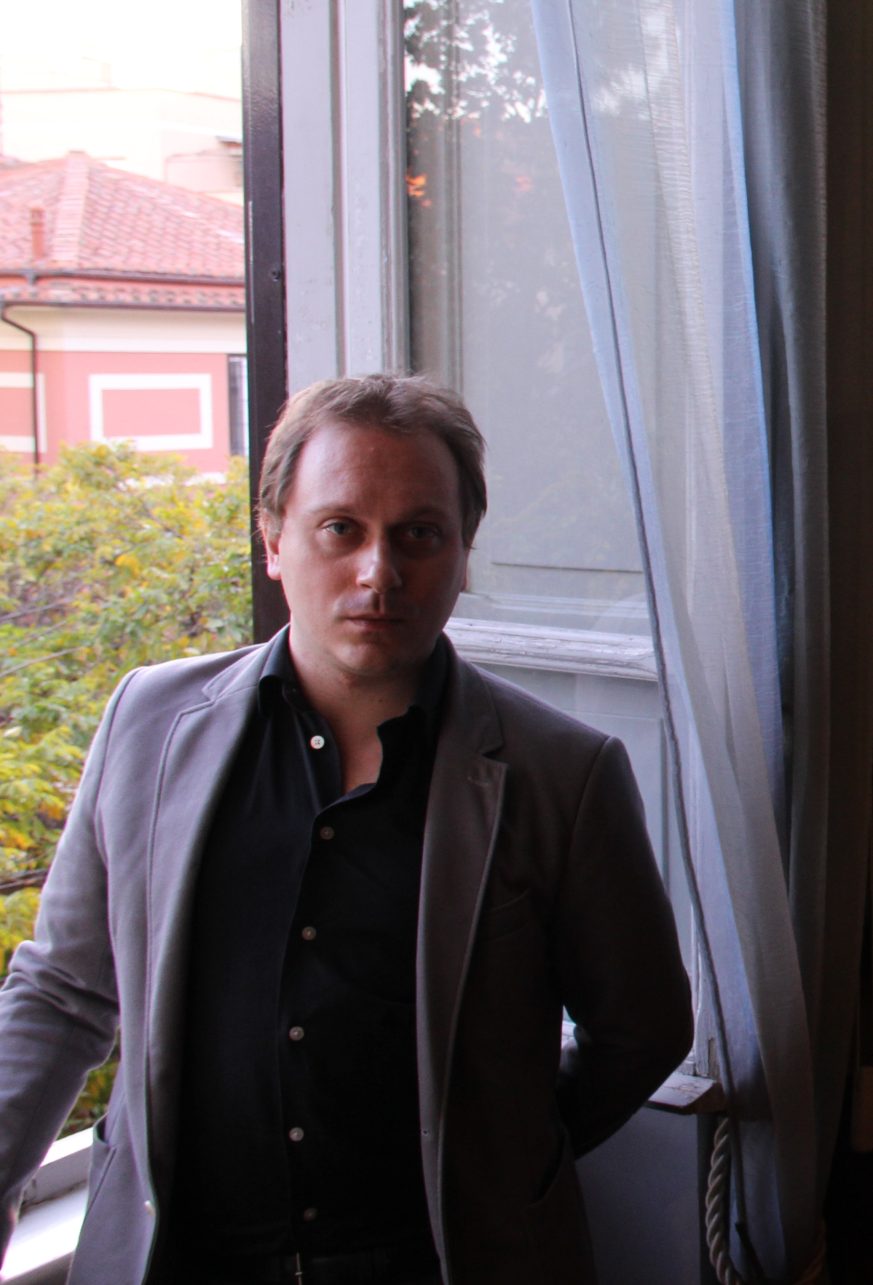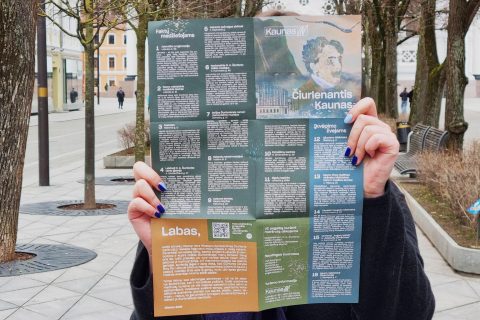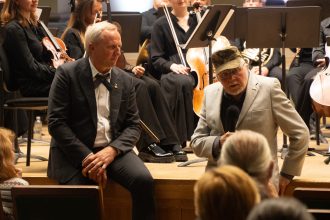Mikalojus Konstantinas Čiurlionis. From misunderstood and underappreciated – to national pride. His art, his words are what we are justifiably proud of. For a foreigner visiting Kaunas for just one day, I would first recommend seeing Čiurlionis’s works. I would probably bring Čiurlionis’s piano works as a gift to a foreign musician. For those who write and read, I would recommend Čiurlionis’s texts.
Why? Because he is our Lithuanian pride. Čiurlionis stands out above other composers and artists due to his diverse creativity, creative period and, of course, the short years of his life. His name is proudly borne by art collectives, societies, mountains, and even cosmic bodies.
This year we celebrate the 150th anniversary of the painter, composer, photographer, and essayist Mikalojus Konstantinas Čiurlionis (22 September 1875 – 10 April 1911). We can reassess his work and his influence, consider the cultural context. Čiurlionis is inexhaustible, as new layers and new meanings seem to be constantly being discovered. Everyone will find something for themselves in Čiurlionis. I cannot speak for art historians, because what interests me most is music, and therefore how the instrumentation of symphonic poems was changed and “corrected”, how revisions of piano pieces differ from original texts, or how entire works are “born” from unfinished drafts.
I talked about all this with pianist and musicologist, researcher of Čiurlionis manuscripts Dr Daniele Buccio (Italy). I must admit – although some of my questions were quite categorical, the answers I received were philosophical. And this is probably the most important lesson for us – to look at everything, Čiurlionis, art, events of the time – philosophically.

You have been visiting Lithuania regularly for some time now – as a concert pianist and as a musicologist. And although we often see the names of Baroque and Viennese classics in your concerts, you talk about Čiurlionis at conferences. How did Čiurlionis come into your life?
As an adolescent, my first acquaintance with Čiurlionis’s music occurred through a recording of some late piano pieces performed by Mūza Rubackytė. At the end of May 2011, I took part in a conference in Canterbury dedicated to Baltic Music and Musicologies; there I met Prof. Gražina Daunoravičienė, Prof. Rimantas Astrauskas, and Dr Rima Povilionienė who encouraged me to attend the planned events in September of that year in Vilnius dedicated to Čiurlionis’s centenary celebration. From 2014 onwards, I participated in the Čiurlionis ir pasaulis summer scholarly meetings in Druskininkai, where I was offered the opportunity to apply my musicological work through practical realisations at the piano.
In your opinion, what is the place of Čiurlionis’s music in the global context? In this anniversary year, as previously, Čiurlionis is represented primarily as a painter. Do you think his music is well-known?
The public who comes into contact with Čiurlionis’s musical and pictorial work commonly experiences a deep fascination and a desire to engage more closely with his style. Organisers of events from the places where Čiurlionis lived and elsewhere are certainly very sensitive to the current anniversary, and will do their best to bring to light the meanings of Čiurlionis’s art both with scholarly presentations and artistic realisations. The knowledge of his music among performers and audiences has considerably spread since the ’90s onwards, supported by fundamental editorial initiatives of an academic and practical nature.
This year is Čiurlionis’s 150th birthday, and many events related to this anniversary will take place in Lithuania and abroad. Please reassure me: surely it’s not only in Lithuania that artists are specially commemorated on their anniversaries? I’m afraid that for the next 50 years we will be silent about Čiurlionis.
The promotion of revivals on specific dates related to the birth and death of artists, or even to premieres of works, represents, among other things, an occasion for scholars, artists, and art lovers to observe the development of understanding over the years and to critically reconsider aspects of collective appreciation. Celebrations can reveal contemporary perspectives and the ways in which the meanings of the celebrated author’s art are received at a particular time. I would like to reassure you by mentioning an upcoming musical and musicological event organised and supported by the Lithuanian Embassy in New Delhi in mid-April.
Recently, previously undiscovered or unfinished works by Čiurlionis have increasingly come to light. How do you assess this practice of creating a work from drafts? How do you assess the authorship of such a work?
Catalogues of Čiurlionis’s musical works were drawn up by V. Karužienė, S. E. Juodis, V. Žukas, by Prof. Vytautas Landsbergis, and Prof. Darius Kučinskas. Only a few additional works have been identified following further review of the manuscript pages. In order to get closer to Čiurlionis’s art, it is possible to follow the signs in his sources and to glimpse relationships between them; in this respect, I am inclined to recognise underlying thematic developments among different works. Developing the ideas found in Čiurlionis’s sketches and jottings has been a significant source of inspiration throughout the 20th century and up to the present day. The prospect of completing unfinished works has always been extremely suggestive and involves how we regard unfinishedness and the aims of such completions. It is always possible to distinguish between the aim of restoring the author’s intention as found in the sources, and the presentation of creative elaborations and integrations.
On the other hand, can we say that all of Čiurlionis’s music is known? You recently presented a discovered song by Čiurlionis. Can you talk about this discovery in more detail?
Čiurlionis’s manuscript sources are now available to readers, and especially to performers, through digitised images. Recently I submitted the reconstruction of an already well-known chamber song, Zadumali się anieli…, to the consideration of Prof. Darius Kučinskas, who supported its first publication. This version was first performed by the soprano Dovilė Kazonaitė. In 2020 I shared with some Lithuanian scholars the source of its poetic text and some initial historical and stylistic remarks, as part of a larger study dedicated to Čiurlionis’s vocal works.
Do you think there was a canonical approach to performing Čiurlionis’s piano music? Or maybe there is no canon for performing Čiurlionis or indeed any Lithuanian piano music?
To consider a musical performance as the actualisation of a certain canon rule may conflict with the idea of the exclusive responsibility of individual artists for their own conscious stylistic choices. A performer’s decision-making, arising from their individual contact with the musical text, would be wrongly reduced solely to imitating the creative conduct of other groups of artists, seen as a mere result of social mediation brought about by context. The reference to a certain performance canon appears as a necessity for connoisseurs to generalise phenomena, in which the individuality of an artist is transcended and inherently encompassed; the determinism of background premises would seem to constrain the acknowledgement of the freedom inherent in artistic outcomes. I am convinced that a performer arrives at their own self-contained point of uncompromising critical observation in relation to a work, and that the traits of a performance evolve in accordance with their understanding of the meanings of the signs from the sources. As this latter field has evolved in recent decades, the stylistic decisions of performers have also been affected. Nevertheless, affinities and common approaches can also be noted among different artists.
What is your relationship with other composers from Lithuania and the Lithuanian diaspora?
The history of Lithuanian music throughout the 20th century is a subject of the greatest interest for musicologists, listeners, and performers; particular attention can be drawn to the way Čiurlionis’s art inspired the thought of composers of the following decades, to the way traditional song nourished instrumental composition, and to the way criteria of national belonging are connected to specific aesthetic purposes embodied in technical compositional features.




